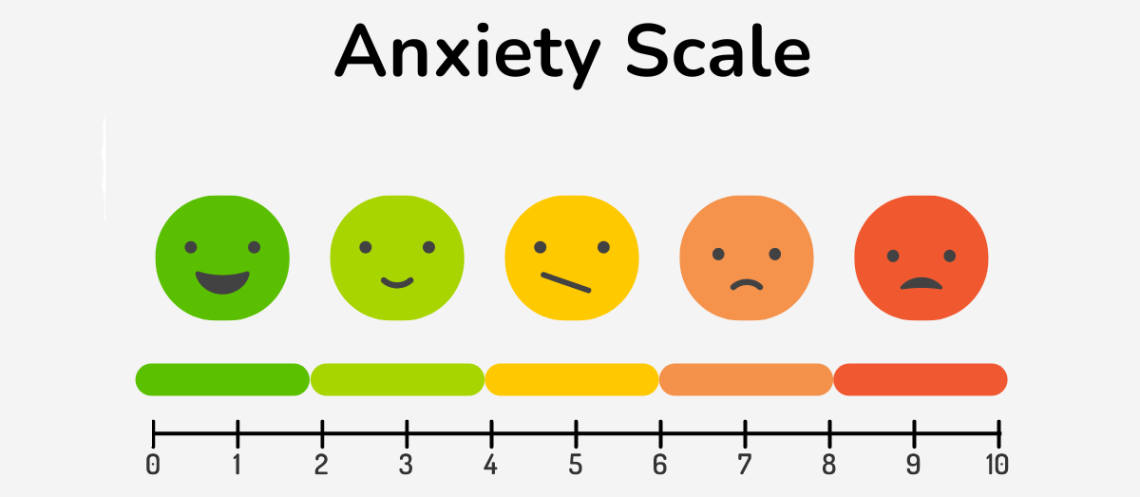Anxiety is often not an all-or-nothing feeling. Just like other emotions, anxiety exists along a continuum with different levels of intensity. You can picture this continuum using the anxiety scale below.
This scale will help your child see that there are different levels of anxiety – they can be less scared or more scared. You and your child can practice rating their anxiety on a scale of 1 through 10 to describe how scared or worried your child is in different situations. By practicing using the anxiety scale, you child will learn how to express different levels of worries and fears.
This scale will be helpful for monitoring how your child is feeling as they continue with LUNA. It will also help you identify fears that your child is willing to take on earlier in the program, and which they might take on later.

Learning to identify anxiety and use the anxiety scale
Learning how to identify anxiety can take time, so it is okay if your child still struggles to identify or rate their anxiety level on the anxiety scale after this week. If you notice that your child is still struggling, you can help them by labeling their emotions. If your child is having trouble with the 0-10 system, we also recommend using “easy,” “medium,” or “hard” instead.
Labeling Anxiety
Since it is easier to see physical signs of anxiety, like pacing, sweating, or complaining of headaches, you can start from there.
Once you identify these physical signs, you can use them as an opportunity to help your child label anxiety that they may be feeling. Identifying physical signs can also help you react to your child’s anxiety in a helpful way.
For example, if you see your child is hesitant to go outside because they saw an insect, this could be a good time to help them connect anxiety to their behavior, which is avoiding going outside. Look at a script below that you can use to help your child connect outward cues with emotions.
- Step 1: Label the emotion you think your child is experiencing “It looks like you are feeling worried.”
- Step 2: Connect the emotion to the outward physical cue “I believe you are feeling worried because I noticed you avoided the bug outside.”
Practicing using the anxiety scale is key! Try to use the anxiety scale whenever you have a chance to talk with your child about anxiety. When your child is afraid of something, you can ask your child in the moment:
What makes you anxious right now? How afraid are you on the anxiety dial?
Alternatively, you can ask your child these questions in the evening when they no longer feel anxious:
What made you anxious earlier today?
Keep practicing using the anxiety scale to monitor of how intense your child’s anxiety and fear are in different situations.








